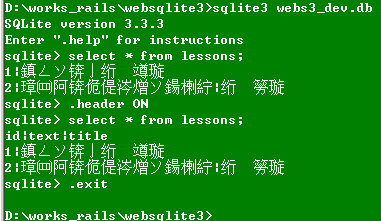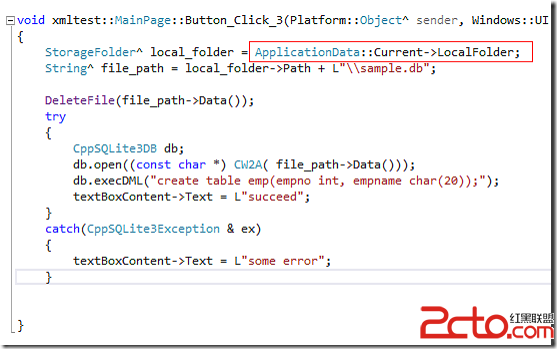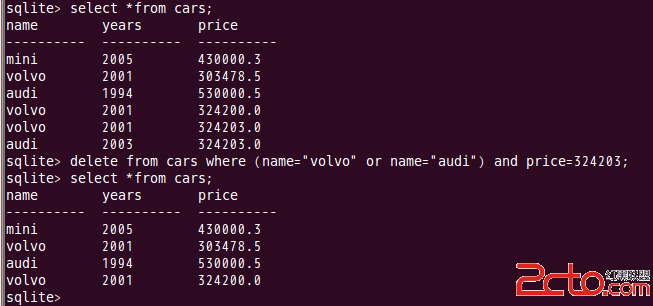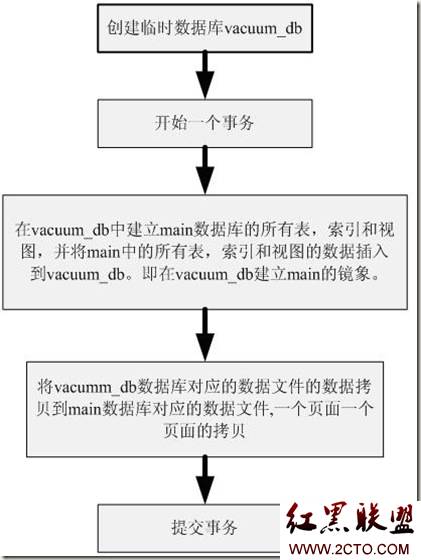SQLite学习手册(在线备份)
一、常用备份:下面的方法是比较简单且常用的SQLite数据库备份方式,见如下步骤:
1). 使用SQLite API或Shell工具在源数据库文件上加共享锁。
2). 使用Shell工具(cp或copy)拷贝数据库文件到备份目录。
3). 解除数据库文件上的共享锁。
以上3个步骤可以应用于大多数场景,而且速度也比较快,然而却存在一定的刚性缺陷,如:
1). 所有打算在源数据库上执行写操作的连接都不得不被挂起,直到整个拷贝过程结束并释放文件共享锁。
2). 不能拷贝数据到in-memory数据库。
3). 在拷贝过程中,一旦备份数据库所在的主机出现任何突发故障,备份数据库可能会被破坏。
在SQLite中提供了一组用于在线数据库备份的APIs函数(C接口),可以很好的解决上述方法存在的不足。通过该组函数,可以将源数据库中的内容拷贝到另一个数据库,同时覆盖目标数据库中的数据。整个拷贝过程可以以增量的方式完成,在此情况下,源数据库也不需要在整个拷贝过程中都被加锁,而只是在真正读取数据时加共享锁。这样,其它的用户在访问源数据库时就不会被挂起。
二、在线备份APIs简介:
SQLite提供了以下3个APIs函数用于完成此操作,这里仅仅给出它们的基本用法,至于使用细节可以参考SQLite官方网站"APIs Reference"(http://www.sqlite.org/c3ref/backup_finish.html)。
1). 函数sqlite3_backup_init()用于创建sqlite3_backup对象,该对象将作为本次拷贝操作的句柄传给其余两个函数。
2). 函数sqlite3_backup_step()用于数据拷贝,如果该函数的第二个参数为-1,那么整个拷贝过程都将在该函数的一次调用中完成。
3). 函数sqlite3_backup_finish()用于释放sqlite3_backup_init()函数申请的资源,以避免资源泄露。
在整个拷贝过程中如果出现任何错误,我们都可以通过调用目的数据库连接的sqlite3_errcode()函数来获取具体的错误码。此外,如果sqlite3_backup_step()调用失败,由于sqlite3_backup_finish()函数并不会修改当前连接的错误码,因此我们可以在调用sqlite3_backup_finish()之后再获取错误码,从而在代码中减少了一次错误处理。见如下代码示例(来自SQLite官网):
1 /*
2 ** This function is used to load the contents of a database file on disk
3 ** into the "main" database of open database connection pInMemory, or
4 ** to save the current contents of the database opened by pInMemory into
5 ** a database file on disk. pInMemory is probably an in-memory database,
6 ** but this function will also work fine if it is not.
7 **
8 ** Parameter zFilename points to a nul-terminated string containing the
9 ** name of the database file on disk to load from or save to. If parameter
10 ** isSave is non-zero, then the contents of the file zFilename are
11 ** overwritten with the contents of the database opened by pInMemory. If
12 ** parameter isSave is zero, then the contents of the database opened by
13 ** pInMemory are replaced by data loaded from the file zFilename.
14 **
15 ** If the operation is successful, SQLITE_OK is returned. Otherwise, if
16 ** an error occurs, an SQLite error code is returned.
17 */
18 int loadOrSaveDb(sqlite3 *pInMemory, const char *zFilename, int isSave){
19 int rc; /* Function return code */
20 sqlite3 *pFile; /* Database connection opened on zFilename */
21 sqlite3_backup *pBackup; /* Backup object used to copy data */
22 sqlite3 *pTo; /* Database to copy to (pFile or pInMemory) */
23 sqlite3 *pFrom; /* Database to copy from (pFile or pInMemory) */
24
25 /* Open the database file identified by zFilename. Exit early if this fails
26 ** for any reason. */
27 rc = sqlite3_open(zFilename, &pFile);
28 if( rc==SQLITE_OK ){
29
30 /* If this is a 'load' operation (isSave==0), then data is copied
31 ** from the database file just opened to database pInMemory.
32 ** Otherwise, if this is a 'save' operation (isSave==1), then data
33 ** is copied from pInMemory to pFile. Set the variables pFrom and
34 ** pTo accordingly. */
35 pFrom = (isSave ? pInMemory : pFile);
36 pTo = (isSave ? pFile : pInMemory);
37
38 /* Set up the backup procedure to copy from the "main" database of
39 ** connection pFile to the main database of connection pInMemory.
40 ** If something goes wrong, pBackup will be set to NULL and an error
41 ** code and message left in connection pTo.
42 **
43 ** If the backup object is successfully created, call backup_step()
44 ** to copy data from pFile to pInMemory. Then call backup_finish()
45 ** to release resources associated with the pBackup object. If an
46 ** error occurred, then an error code and message will be left in
47 ** connection pTo. If no error occurred, then the error code belonging
48 ** to pTo is set to SQLITE_OK.
49 */
50 pBackup = sqlite3_backup_init(pTo, "main", pFrom, "main");
51 if( pBackup ){
52 (void)sqlite3_backup_step(pBackup, -1);
53 (void)sqlite3_backup_finish(pBackup);
54 }
55 rc = sqlite3_errcode(pTo);
56 }
57
58 /* Close the database connection opened on database file zFilename
59 ** and return the result of this function. */
60 (void)sqlite3_close(pFile);
61 return rc;
62 }
三、高级应用技巧:
在上面的例子中,我们是通过sqlite3_backup_step()函数的一次调用完成了整个拷贝过程。该实现方式仍然存在之前说过的挂起其它写访问连接的问题,为了解决该问题,这里我们将继续介绍另外一种更高级的实现方式--分片拷贝,其实现步骤如下:
1). 函数sqlite3_backup_init()用于创建sqlite3_backup对象,该对象将作为本次拷贝操作的句柄传给其余两个函数。
2). 函数sqlite3_backup_step()被调用用于拷贝数据,和之前方法不同的是,该函数的第二个参数不再是-1,而是一个普通的正整数,表示每次调用将会拷贝的页面数量,如5。
3). 如果在函数sqlite3_backup_step()调用结束后,仍然有更多的页面需要被拷贝,那么我们将主动休眠250ms,然后再重复步骤2).
4). 函数sqlite3_backup_finish()用于释放sqlite3_backup_init()函数申请的资源,以避免资源泄露。
在上述步骤3)中我们主动休眠250ms,此期间,该拷贝操作不会在源数据库上持有任何读锁,这样其它的数据库连接在进行写操作时亦将不会被挂起。然而在休眠期间,如果另外一个线程或进程对源数据库进行了写操作,SQLite将会检测到该事件的发生,从而在下一次调用sqlite3_backup_step()函数时重新开始整个拷贝过程。唯一的例外是,如果源数据库不是in-memory数据库,同时写操作是在与拷贝操作同一个进程内完成,并且在操作时使用的也是同一个数据库连接句柄,那么目的数据库中数据也将被此操作同时自动修改。在下一次调用sqlite3_backup_step()时,也将不会有任何影响发生。
事实上,在SQLite中仍然提供了另外两个辅助性函数backup_remaining()和backup_pagecount(),其中前者将返回在当前备份操作中还有多少页面需要被拷贝,而后者将返回本次操作总共需要拷贝的页面数量。显而易见的是,通过这两个函数的返回结果,我们可以实时显示本次备份操作的整体进度,计算公式如下:
Completion





